Contents
Guide
Page List
 To my husband, Chris. Thank you for supporting me, believing in me, and being my editor. I love you!To my mom, Diane, for instilling a love of calculus in me and always teaching me to reach for the stars.To my brothers, Joseph and Michael, for all of their encouragement along the way.
To my husband, Chris. Thank you for supporting me, believing in me, and being my editor. I love you!To my mom, Diane, for instilling a love of calculus in me and always teaching me to reach for the stars.To my brothers, Joseph and Michael, for all of their encouragement along the way. Copyright 2021 by Kaplan, Inc., d/b/a Barrons Educational Series All rights reserved under International and Pan-American Copyright Conventions. By payment of the required fees, you have been granted the non-exclusive, non-transferable right to access and read the text of this eBook on screen. No part of this text may be reproduced, transmitted, downloaded, decompiled, reverse engineered, or stored in or introduced into any information storage and retrieval system, in any form or by any means, whether electronic or mechanical, now known or hereinafter invented, without the express written permission of the publisher. Published by Kaplan, Inc., d/b/a Barrons Educational Series 750 Third Avenue New York, NY 10017
www.barronseduc.com 978-1-5062-7320-4 10 9 8 7 6 5 4 3 2 1 Kaplan, Inc., d/b/a Barrons Educational Series print books are available at special quantity discounts to use for sales promotions, employee premiums, or educational purposes.
For more information or to purchase books, please call the Simon & Schuster special sales department at 866-506-1949.
Contents
Painless calculus? It is not as impossible as you might think. I believe that anyone can learn to love and appreciate one of the most challenging topics in mathematics. I have been teaching math for over 15 years. Math has its own language.
Painless Icons and Features This book is designed with several unique features to help make learning calculus easy.

PAINLESS TIP You will see Painless Tips throughout the book.

PAINLESS TIP You will see Painless Tips throughout the book.
These include helpful tips, hints, and strategies on the surrounding topics.  CAUTIONMajor Mistake Territory! Caution boxes will help you avoid common pitfalls or mistakes. Be sure to read them carefully.
CAUTIONMajor Mistake Territory! Caution boxes will help you avoid common pitfalls or mistakes. Be sure to read them carefully.  MATH TALK! These boxes translate math talk into plain English to make it even easier to understand calculus.
MATH TALK! These boxes translate math talk into plain English to make it even easier to understand calculus.  REMINDER Reminders will call out information that is important to remember.
REMINDER Reminders will call out information that is important to remember.  BRAIN TICKLERS There are brain ticklers throughout each chapter in the book.
BRAIN TICKLERS There are brain ticklers throughout each chapter in the book.  BRAIN TICKLERS There are brain ticklers throughout each chapter in the book.
BRAIN TICKLERS There are brain ticklers throughout each chapter in the book.
These quizzes are designed to make sure you understand what youve just learned and to test your progress as you move forward in the chapter. Complete all the Brain Ticklers and check your answers. If you get any wrong, make sure to go back and review the topics associated with the questions you missed. PAINLESS STEPS Complex procedures are divided into a series of painless steps. These steps help you solve problems in a systematic way. EXAMPLES Most topics include examples with solutions. EXAMPLES Most topics include examples with solutions.
If you are having trouble, research shows that writing or copying the problem may help you understand it. Chapter Breakdown is titled Limits and Continuity and serves as an introduction to the building blocks of calculus. Limits allow us to discover one of the major branches of calculus. Limits help us get out of trouble when we are evaluating what seems to be impossible. discusses one of the major branches of calculus, differentiation. will become your new best friend. will become your new best friend.
In this chapter, you will learn all of the derivative shortcut rules to make finding derivatives faster and easier. is where you will learn to apply your newfound derivative rules. The derivative has many different meanings and uses. A lot of the math you have learned in the past makes a return, and calculus is there to help explain why it works! is the other major branch of calculus, antidifferentiation. Think of it as the opposite of differentiation. In this chapter, you will learn that an antiderivative is an integral.
Then you will discover all the different integration shortcut techniques. , where you will gain a deeper understanding of integrals and what they represent. This will get you in tip-top shape for their applications in the next chapter. will put your understanding of integrals to the test when it explores the many different applications of antidifferentiation. Many of the three-dimensional formulas you learned in geometry come back to light as this chapter will show you how calculus can find areas and volumes of some pretty wacky shapes. You will also leave with a new appreciation for finding the distance between two points. is a great way to tie up loose ends from previous chapters.
This is where the connection between derivatives and integrals comes to light. You will discover how well they work together and the amazing connections they have. Be sure to get your pencil and paper ready, and dont be afraid to show off your graphing skills! If you are learning calculus for the first time or if you are trying to remember what you have learned but may have forgotten, this book is for you. It is a painless introduction to calculus that is both explicit and instructive. Turn forward to the first page. Theres nothing to be afraid of.
Remember: calculus is painless.
The concept of a limit plays a vital role in calculus. A limit will help to evaluate expressions that normally would be
undefined or
indeterminate.

MATH TALK! An expression can be undefined in a few ways, such as a 0 in the denominator or approaching . Indeterminate is different from undefined. Indeterminate means the expression may still have a value, but alternative methods of solution need to be implemented.
Indeterminate forms may be  , and others. Given a function f (x), the limit of f (x) as x approaches c is a real number L if f (x) can be made arbitrarily close to L by having x approach close to c (but not equal to c). This is notated in the table below.
, and others. Given a function f (x), the limit of f (x) as x approaches c is a real number L if f (x) can be made arbitrarily close to L by having x approach close to c (but not equal to c). This is notated in the table below.
| Notation | Read as |
 | The limit as x approaches c of f (x) equals L |
If the limit equals a value
L, the limit exists. It is understood that the values of
f (
x) approach
L as
x approaches
c from the left and from the right.

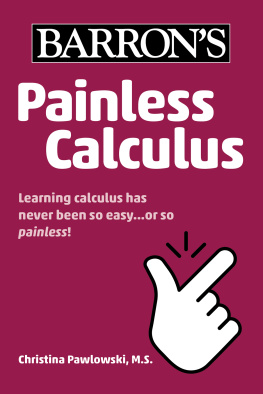

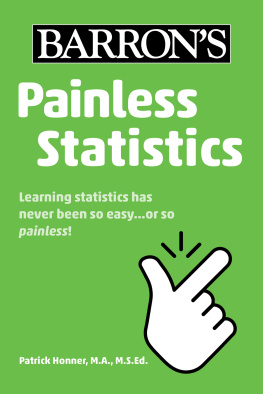

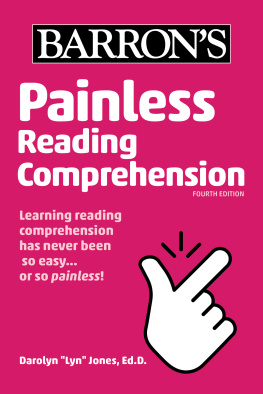

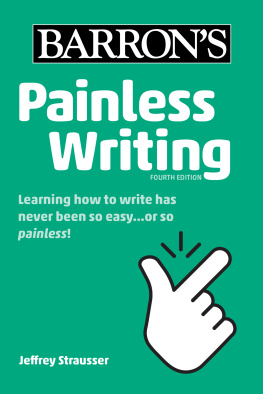
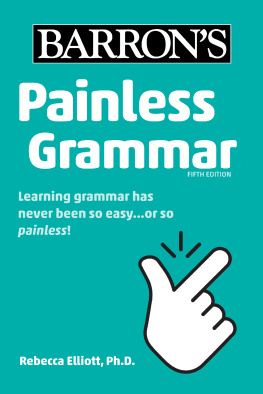
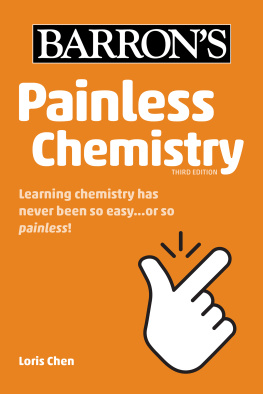
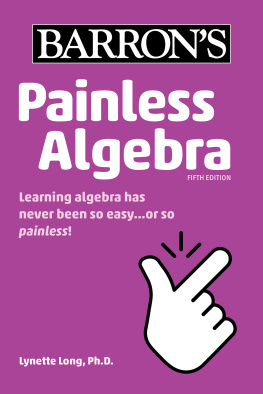

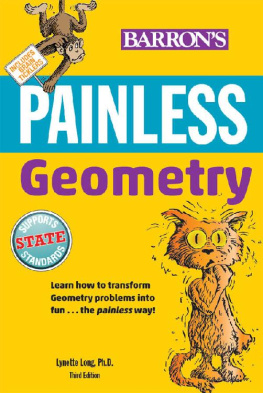


 To my husband, Chris. Thank you for supporting me, believing in me, and being my editor. I love you!To my mom, Diane, for instilling a love of calculus in me and always teaching me to reach for the stars.To my brothers, Joseph and Michael, for all of their encouragement along the way. Copyright 2021 by Kaplan, Inc., d/b/a Barrons Educational Series All rights reserved under International and Pan-American Copyright Conventions. By payment of the required fees, you have been granted the non-exclusive, non-transferable right to access and read the text of this eBook on screen. No part of this text may be reproduced, transmitted, downloaded, decompiled, reverse engineered, or stored in or introduced into any information storage and retrieval system, in any form or by any means, whether electronic or mechanical, now known or hereinafter invented, without the express written permission of the publisher. Published by Kaplan, Inc., d/b/a Barrons Educational Series 750 Third Avenue New York, NY 10017 www.barronseduc.com 978-1-5062-7320-4 10 9 8 7 6 5 4 3 2 1 Kaplan, Inc., d/b/a Barrons Educational Series print books are available at special quantity discounts to use for sales promotions, employee premiums, or educational purposes.
To my husband, Chris. Thank you for supporting me, believing in me, and being my editor. I love you!To my mom, Diane, for instilling a love of calculus in me and always teaching me to reach for the stars.To my brothers, Joseph and Michael, for all of their encouragement along the way. Copyright 2021 by Kaplan, Inc., d/b/a Barrons Educational Series All rights reserved under International and Pan-American Copyright Conventions. By payment of the required fees, you have been granted the non-exclusive, non-transferable right to access and read the text of this eBook on screen. No part of this text may be reproduced, transmitted, downloaded, decompiled, reverse engineered, or stored in or introduced into any information storage and retrieval system, in any form or by any means, whether electronic or mechanical, now known or hereinafter invented, without the express written permission of the publisher. Published by Kaplan, Inc., d/b/a Barrons Educational Series 750 Third Avenue New York, NY 10017 www.barronseduc.com 978-1-5062-7320-4 10 9 8 7 6 5 4 3 2 1 Kaplan, Inc., d/b/a Barrons Educational Series print books are available at special quantity discounts to use for sales promotions, employee premiums, or educational purposes.  PAINLESS TIP You will see Painless Tips throughout the book.
PAINLESS TIP You will see Painless Tips throughout the book.  CAUTIONMajor Mistake Territory! Caution boxes will help you avoid common pitfalls or mistakes. Be sure to read them carefully.
CAUTIONMajor Mistake Territory! Caution boxes will help you avoid common pitfalls or mistakes. Be sure to read them carefully.  MATH TALK! These boxes translate math talk into plain English to make it even easier to understand calculus.
MATH TALK! These boxes translate math talk into plain English to make it even easier to understand calculus.  REMINDER Reminders will call out information that is important to remember.
REMINDER Reminders will call out information that is important to remember.  BRAIN TICKLERS There are brain ticklers throughout each chapter in the book.
BRAIN TICKLERS There are brain ticklers throughout each chapter in the book.  , and others. Given a function f (x), the limit of f (x) as x approaches c is a real number L if f (x) can be made arbitrarily close to L by having x approach close to c (but not equal to c). This is notated in the table below.
, and others. Given a function f (x), the limit of f (x) as x approaches c is a real number L if f (x) can be made arbitrarily close to L by having x approach close to c (but not equal to c). This is notated in the table below.